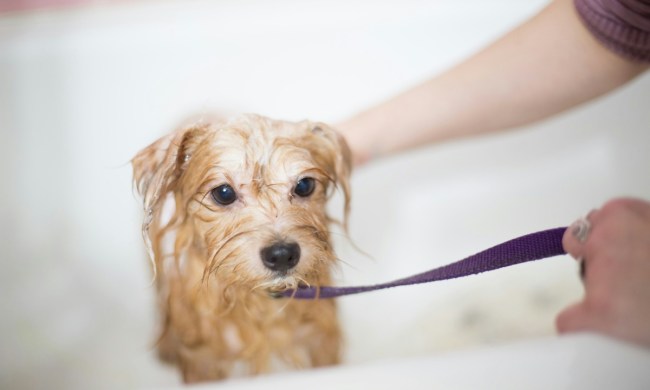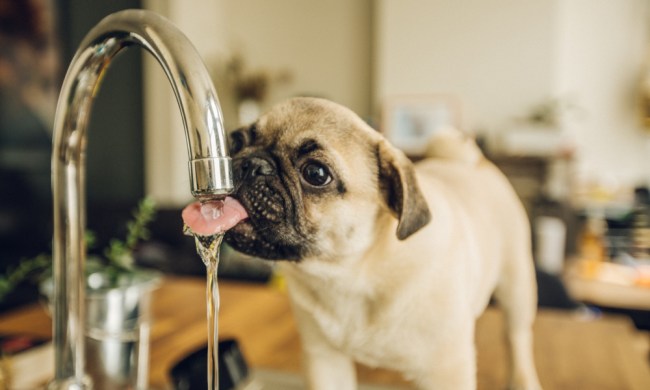If you’re lucky enough to share your life with a Labrador retriever, you know they love outdoor adventures. That’s why it’s so important to protect them from fleas and ticks. Luckily, there’s a wide variety of flea and tick medicines on the market for large dogs. It’s always best to consult with your veterinarian before using any new medication on your dog. Following are four flea and tick preventatives that work well for Labrador retrievers.
NexGard Chewables
NexGard comes in beef-flavored chewable tablets. This preventative kills fleas and ticks and offers protection for a full month. In addition, it has been approved by the U.S. Food and Drug Administration to prevent the infections that cause Lyme disease.
How it works
NexGard contains the active ingredient afoxolaner, which is absorbed into the bloodstream after ingestion. Fleas and ticks die when they ingest blood containing NexGard.
Possible side effects
The most frequently reported adverse reactions are vomiting, itching, lethargy, diarrhea, and lack of appetite. Veterinary specialists caution against using this preventative on dogs with a history of seizures or neurologic disorders.
What it costs
A three-month supply of NexGard for large dogs is $62.99 at Chewy.com, where the product has a 4.7-star rating. A veterinary prescription is required to purchase NexGard.

K9 Advantix II
This monthly topical preventative is applied directly onto the dog’s skin. It repels and kills all life stages of fleas as well as four varieties of ticks. Additionally, it repels and kills mosquitoes, kills chewing lice, and repels biting flies.
How it works
The active ingredients in K9 Advantix II are imidacloprid, permethrin, and pyriproxyfen. Once applied, the solution spreads over your dog’s skin. Insects are killed on contact. This means that fleas, ticks, and mosquitoes don’t have to bite your dog to die, helping to prevent the transmission of diseases.
Possible side effects
Reported side effects include skin irritation such as redness and scratching, and some dogs have experienced vomiting or diarrhea.
What it costs
A four-month supply of K9 Advantix II for large dogs is $48.98 at 1-800 PetMeds, where it has a 4.5-star rating.
Bravecto Chews
This oral preventative is a popular choice with veterinarians and pet owners because each chewable tablet offers protection from fleas and ticks for three months. The chews are pork-flavored and can be given with or without food.
How it works
The active ingredient in Bravecto is fluralaner. After you give your dog Bravecto, the fluralaner quickly reaches tissue fluids just under the skin. When fleas and ticks bite, they ingest the preventative and die.
Possible side effects
The most commonly reported adverse reactions include vomiting, decreased appetite, diarrhea, lethargy, and flatulence. This product is not recommended for dogs with a history of seizures or neurologic disorders.
How much it costs
One chew for dogs 44 to 88 pounds is $59.99 at Chewy.com, where it has a 5-star rating. A veterinary prescription is required to purchase Bravecto Chews.
Frontline Plus for Dogs
Frontline products have been around for almost 20 years, earning the trust of veterinarians and pet owners. The Frontline Plus spot-on preventative is applied directly onto the dog’s skin between the shoulder blades. The solution is water-resistant 24 hours after application, making it a good choice for Labrador retrievers as most of these dogs love to swim.
How it works
The active ingredients in Frontline Plus are fipronil, which kills adult fleas and ticks, and s-methoprene, which kills flea eggs and larvae. The preventative is stored in the oil glands of the dog’s skin and eventually coats the pet’s hair, where it kills fleas and ticks on contact.
Possible side effects
Dogs may experience irritation or reddening of the skin at the site of application.
What it costs
A three-month supply for large dogs is $36.98 at Amazon.com, where it has a 4.4-star rating.
Many pet parents worry about exposing their dogs to the harsh chemicals in flea and tick preventatives. And while that’s totally understandable, veterinary specialists say that dog owners should rest assured that the benefits far outweigh the risks when it comes to protecting your pet from the wide range of diseases carried by fleas and ticks.



